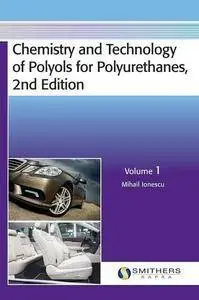Chemistry and Technology of Polyols for Polyurethanes, 2nd Edition, Volume 1 by Mihail Ionescu
2016 | ISBN: 1910242136, 1910242144 | English | 392 pages | PDF | 23 MB
2016 | ISBN: 1910242136, 1910242144 | English | 392 pages | PDF | 23 MB
Polyurethanes are one of the most dynamic groups of polymers, they find use in nearly every aspect of modern life, in applications such as furniture, bedding, seating and instrument panels for cars, shoe soles, thermoinsulation, carpet backings, packaging, adhesives, sealants, binders and as coatings.
In 2004 10.6 million tons of polyurethanes were produced, in 2014 the world production was close to 20 million tons. In the last decade (2005-2015) important, worldwide developments in the area of polyols for polyurethanes were carried out, especially for polyols from renewable resources, described in detail in this second edition of the book.
The main raw materials used for the production of PU are polyols and isocyanates. The first of these is the subject of this two volume handbook.
Volume 1 is dedicated to polyols for elastic PU (flexible foams, elastomers and so on).
Volume 2 is dedicated to polyols for rigid PU (rigid foams, wood substitute, packaging, flotation materials and so on).
The book considers the raw materials used to build the PU polymeric architecture. It covers the chemistry and technology of oligo-polyol fabrication, the characteristics of the various oligo-polyol families and the effects of the oligo-polyol structure on the properties of the resulting PU. It presents the details of oligo-polyol synthesis, and explains the chemical and physico-chemical subtleties of oligo-polyol fabrication.
This book links data and information concerning the chemistry and technology of oligo-polyols for PU, providing a comprehensive overview of:
Basic PU chemistry
Key oligo-polyol characteristics
Synthesis of the main oligo-polyol families, including: polyether polyols, filled polyether polyols, polyester polyols, polybutadiene polyols, acrylic polyols, polysiloxane polyols, aminic polyols
Polyols from renewable resources
Flame retardant polyols
Chemical recovery of polyols
Relationships between polyol structure and PU properties
This book will be of interest to all specialists working with polyols for the manufacture of PU and to all researchers that would like to know more about polyol chemistry.



